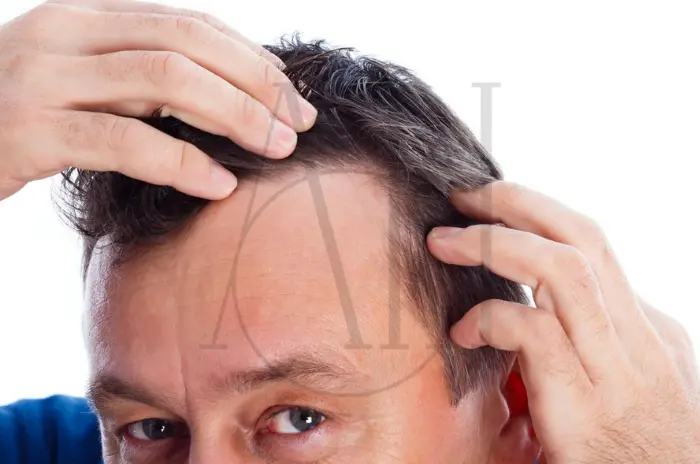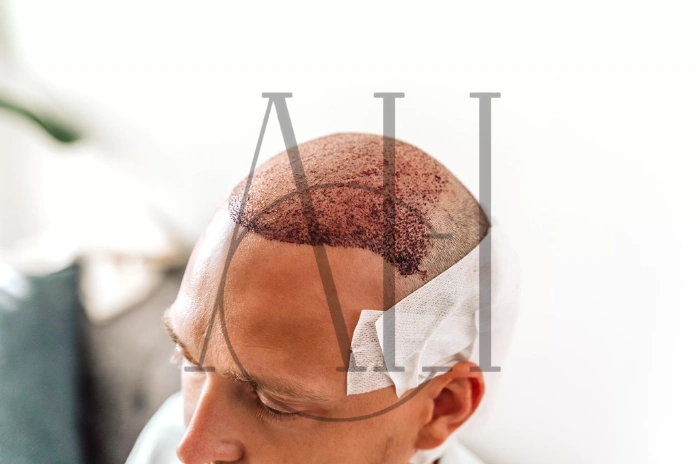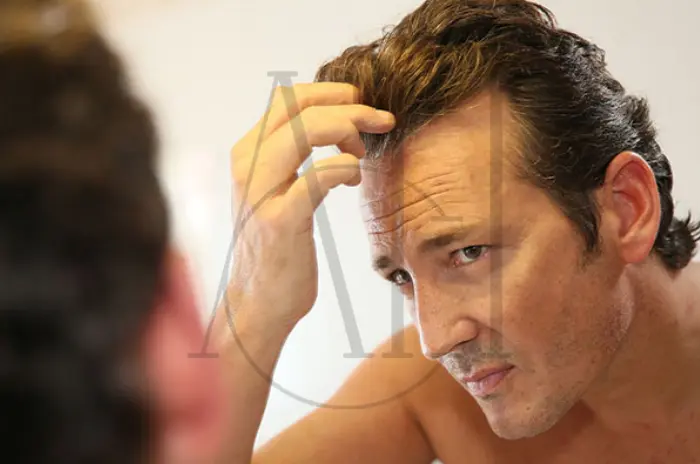Hair loss can be one of the most distressing physical manifestations of stress, creating a vicious cycle where hair thinning causes additional anxiety. Understanding the relationship between stress and hair growth is crucial for developing effective strategies to maintain healthy hair while managing life’s pressures.
The connection between stress and hair health involves hormonal cascades and cellular mechanisms that can significantly alter hair growth patterns. By recognizing these connections and implementing targeted stress management strategies, individuals can protect their hair health while improving overall well-being.
Table of Contents
ToggleHow Stress Affects Hair Growth
Stress triggers a complex cascade of physiological responses that directly impact hair follicle function and the natural hair growth cycle. When the body experiences stress, it releases elevated levels of cortisol, the primary stress hormone, which disrupts normal hair development processes.
The hair growth cycle consists of three phases: anagen (active growth), catagen (transition), and telogen (resting). Under normal circumstances, approximately 85-90% of hair follicles remain in the anagen phase, actively producing hair for 2-7 years. However, chronic stress can prematurely push hair follicles into the telogen phase, resulting in increased hair shedding.
Physiological Mechanisms:
- Hormonal Disruption: Elevated cortisol levels interfere with hair follicle activity
- Reduced Blood Flow: Stress-induced vasoconstriction limits nutrient delivery to follicles
- Inflammatory Response: Chronic stress triggers inflammatory pathways that damage follicles
- Nutrient Depletion: Stress increases metabolic demands, reducing nutrients for hair growth
Stress Response Timeline:
| Stress Duration | Hair Growth Impact | Visible Changes |
|---|---|---|
| Acute (1-4 weeks) | Temporary follicle disruption | Minimal immediate effects |
| Subacute (1-3 months) | Increased telogen transition | Hair thinning becomes noticeable |
| Chronic (3+ months) | Significant cycle disruption | Marked hair loss |
The relationship between stress and hair loss involves a delayed response, with significant hair shedding typically occurring 2-4 months after the initial stressful event. This delayed timeline makes it challenging to identify the connection between specific stressors and subsequent hair loss.
Intermediary organizations specializing in hair restoration observe that patients experiencing chronic stress show distinctive patterns of hair thinning, often characterized by diffuse hair loss rather than localized patterns typical of genetic conditions.
Signs of Stress-Related Hair Loss
Recognizing the signs of stress-related hair loss is essential for early intervention and treatment. Unlike genetic pattern baldness, stress-induced hair loss typically presents with specific characteristics that help distinguish it from other forms of alopecia.
Stress-related hair loss commonly manifests as diffuse thinning across the scalp rather than concentrated areas of baldness. Individuals may notice increased hair shedding during washing, brushing, or styling, with significantly more hair appearing on pillows, in shower drains, or on clothing.
Observable Changes:
- Increased Daily Hair Shedding: More than 100-150 hairs lost per day
- Diffuse Scalp Thinning: Overall reduction in hair density
- Hair Texture Changes: Hair becomes finer, more brittle, or loses shine
- Delayed Growth: New hair growth appears slower than previous cycles
- Scalp Sensitivity: Increased tenderness or discomfort
Temporal Patterns:
| Timeline After Stressor | Typical Symptoms | Hair Loss Characteristics |
|---|---|---|
| 0-2 months | Minimal visible changes | Follicles entering telogen phase |
| 2-4 months | Noticeable increased shedding | Peak hair loss period |
| 4-6 months | Continued thinning | Maximum visible impact |
| 6-12 months | Gradual improvement | Recovery begins if stress resolved |
Stress-related hair loss often occurs alongside other symptoms including sleep disturbances, changes in appetite, increased anxiety, difficulty concentrating, and stress-related physical symptoms such as headaches or digestive issues.
Healthcare providers evaluate stress-related hair loss through comprehensive medical history, physical examination, and assessment of recent life events. The timing of hair loss in relation to significant stressors provides crucial diagnostic information.
Intermediary organizations use specialized assessment tools to evaluate both physical characteristics of hair loss and psychological factors, providing a holistic approach to diagnosis and treatment planning.
Types of stress-related hair loss
Stress can trigger several distinct types of hair loss, each with unique characteristics and treatment approaches. Understanding these different forms helps healthcare providers develop targeted treatment strategies.
Telogen Effluvium represents the most common form of stress-related hair loss, characterized by increased hair follicles entering the telogen (resting) phase prematurely. This condition typically develops 2-4 months after a significant stressful event and results in diffuse hair thinning across the entire scalp.
Alopecia Areata is an autoimmune condition that can be triggered or exacerbated by stress, resulting in patchy hair loss in circular patterns. Research suggests that stress may trigger autoimmune responses that attack hair follicles.
Trichotillomania involves compulsive hair pulling behaviors often triggered by stress, anxiety, or other psychological factors. This condition results in patchy hair loss with irregular patterns and may require both dermatological and psychological intervention.
Comparison of Stress-Related Hair Loss Types:
| Type | Onset Pattern | Hair Loss Characteristics | Recovery Timeline |
|---|---|---|---|
| Telogen Effluvium | Gradual, diffuse | Even thinning across scalp | 6-12 months |
| Alopecia Areata | Sudden, patchy | Circular bald spots | Variable, often cyclical |
| Trichotillomania | Progressive | Irregular patches from pulling | Depends on behavior modification |
Acute stress-related hair loss typically results from single significant events such as surgery, severe illness, major life changes, or traumatic experiences. This form often resolves naturally once the stressor is removed or adequately managed.
Chronic stress hair loss develops from ongoing stressors such as work pressure, relationship problems, financial difficulties, or long-term health issues. This type requires more comprehensive intervention addressing both underlying stressors and resulting hair loss.
Understanding these different types helps intermediary organizations develop personalized treatment approaches that address both physical symptoms and underlying psychological factors contributing to stress-related hair loss.

Best Ways to Reduce Stress for Healthier Hair
Effective stress management represents the cornerstone of treating and preventing stress-related hair loss. A comprehensive approach combining lifestyle modifications, stress reduction techniques, and targeted interventions can significantly improve both stress levels and hair health outcomes.
Developing a multi-faceted approach to stress management provides the best outcomes for both psychological well-being and hair health. This involves addressing immediate stress symptoms while building long-term resilience and coping skills.
Evidence-Based Stress Reduction Techniques:
- Mindfulness and Meditation: Regular practice can significantly reduce cortisol levels
- Regular Physical Exercise: Moderate exercise helps regulate stress hormones and improves circulation
- Adequate Sleep Hygiene: 7-9 hours of quality sleep supports optimal hormone production
- Balanced Nutrition: Proper nutrition provides essential building blocks for healthy hair
- Social Support Systems: Strong relationships provide crucial stress buffering effects
Lifestyle Modifications:
| Intervention | Implementation | Expected Benefits |
|---|---|---|
| Stress Management Training | Weekly sessions for 8-12 weeks | Reduced cortisol, improved coping |
| Regular Exercise Routine | 30 minutes, 5 days per week | Better circulation, hormone balance |
| Meditation Practice | 10-20 minutes daily | Lower stress hormones, better sleep |
| Nutritional Optimization | Balanced diet with key nutrients | Improved hair follicle nutrition |
Proper nutrition plays a crucial role in both stress management and hair health. Key nutrients include protein for hair structure, iron for oxygen transport, vitamins B and D for follicle function, and omega-3 fatty acids for inflammation reduction.
How long regrowth takes after stress
Hair regrowth following stress-related loss follows predictable patterns, though individual recovery timelines vary significantly based on multiple factors including the type and duration of stress, overall health status, and effectiveness of stress management interventions.
Recovery Timeline by Hair Loss Type:
| Hair Loss Type | Initial Improvement | Significant Regrowth | Full Recovery |
|---|---|---|---|
| Telogen Effluvium | 2-4 months | 6-9 months | 12-18 months |
| Alopecia Areata | 3-6 months | 6-12 months | Variable, may be cyclical |
| Trichotillomania | 1-3 months | 4-8 months | 6-12 months with behavior change |
Several factors significantly influence the speed and completeness of hair regrowth after stress-related loss. Age plays a crucial role, with younger individuals typically experiencing faster recovery than older adults. Overall health status, nutritional adequacy, and effectiveness of stress management also impact recovery outcomes.
Myths and facts about stress and hair growth
Separating fact from fiction regarding stress and hair growth is essential for making informed decisions about treatment and management strategies. Numerous misconceptions persist about this topic, often leading to ineffective treatments or unnecessary anxiety about hair loss.
Myth: Stress causes immediate hair loss that appears within days of a stressful event. Fact: Stress-related hair loss typically has a delayed onset of 2-4 months after the initial stressor due to the natural hair growth cycle timing.
Myth: All stress-related hair loss is permanent and irreversible. Fact: Most forms of stress-related hair loss are temporary and reversible with appropriate stress management and time for recovery.
Myth: Only severe trauma or major life events can cause stress-related hair loss. Fact: Chronic low-level stress from daily life pressures can also contribute to hair loss over time, particularly when combined with other risk factors.
Evidence-Based Facts:
| Statement | Evidence Level | Clinical Significance |
|---|---|---|
| Chronic stress elevates cortisol affecting hair cycles | High | Directly impacts treatment approach |
| Stress-related hair loss is usually reversible | High | Provides hope for patients |
| Nutrition affects stress recovery and hair health | Moderate | Supports comprehensive treatment plans |
| Early intervention improves outcomes | High | Emphasizes importance of prompt treatment |
Many people believe that expensive hair products or supplements can quickly reverse stress-related hair loss. While proper nutrition and gentle hair care support recovery, addressing the underlying stress remains the most crucial intervention.
Scientific research has revealed that the relationship between stress and hair loss involves complex hormonal and cellular mechanisms that require time to normalize. Popular beliefs often oversimplify this process or promise unrealistic quick fixes.
Intermediary organizations emphasize evidence-based approaches to stress-related hair loss, helping patients understand realistic timelines and effective interventions while avoiding costly but ineffective treatments. Understanding the true nature of stress-related hair loss helps individuals set realistic expectations for recovery and make informed decisions about treatment options.
FAQ
Can stress really cause hair to fall out?
Yes, stress can definitively cause hair loss through several well-documented mechanisms. When you experience significant stress, your body releases elevated levels of cortisol and other stress hormones that directly interfere with the normal hair growth cycle.
What are the most common types of hair loss?
The most common types of hair loss include androgenetic alopecia (genetic pattern baldness), which affects both men and women and accounts for approximately 95% of male hair loss. Telogen effluvium, often stress-related, represents the second most common type, characterized by diffuse thinning across the scalp.
How long will my hair take to regrow?
Hair regrowth timing varies significantly depending on the type and cause of hair loss, but stress-related hair loss typically shows initial improvement within 3-6 months of effective stress management.
Can stress-induced hair loss be permanent?
Most stress-induced hair loss is temporary and reversible with appropriate treatment and stress management. Conditions like telogen effluvium typically resolve completely once the underlying stress is addressed and sufficient time passes for the hair growth cycle to normalize.




